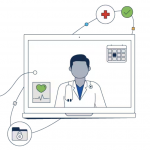As part of Cisco Live Melbourne, the Health Innovation Roundtable was established to bring together representatives from more than 20 hospitals in Australia, drawing on a broad range of roles including board members, CIOs, clinicians and administrative leads.
The discussion was focused on the scale, pace and nature of innovation in the care delivery processes in Australian hospitals. In particular, it looked at a clear innovation paradox in healthcare, where rapidly escalating cost and demand have not had the transformational effect on process that has been observed in other industries. This is particularly puzzling in a space where innovation in pharmaceuticals, diagnostics and clinical techniques accelerates at a blinding pace.

The conversation centered around:
- The recent acceleration in interest around innovation and the enablers that would lead to the sustained growth in innovation practice
- The management of innovation
- The importance of the information infrastructure in delivering the supporting capabilities for process innovation within healthcare
These topics were given context through examples of successful innovations from some of Australia’s leading healthcare innovators. Subsequent discussion among the participants expanded on the challenges they encountered and strategies they employed for success.
A central element of this discussion was the need to reduce the risk associated with innovation and shift to smaller more agile projects. These rapid cycle projects must, at the same time, fit as part of a transformational framework for major systems reform. This is the big challenge in healthcare innovation, which is to create a more incremental, lower risk and more affordable approach to major process reform.
The concluding discussion focused on the importance of the social aspect of change, the need to carefully manage their technological, organizational and human dimensions. It is critical to remember that healthcare process innovations are about people and the way they interact with technology; it is a human story that needs to be written in their language.


Thank you for noting that it stems from the human dimensions. As I always say your strategy and execution should always include the people requirements. #humansideoftech
Good article. To summarise:
1. Be clear on the functional requirements – business, people, users, etc;
2. Lowest Common Denominators – ICT enabling infrastructure sufficiently scaleable to address the functional requirements;
3. How do you eat the elephant? A bite at a time – chunk the larger project or outcome requirement into smaller achievable results/projects. Smaller, agile components that enable “runs on the board” and build confidence an overall success.